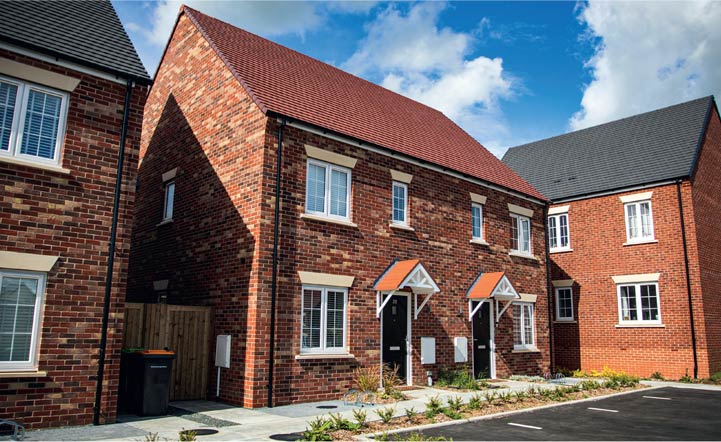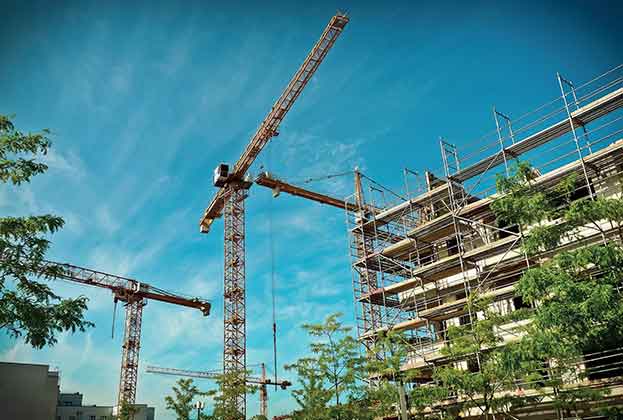Long-term security, but policy risks remain
Shared ownership remains attractive to for-profit registered providers (FPRPs). That’s because it provides long-term income streams with lighter touch repairs obligations compared to social and affordable rent. There’s also the potential for house price inflation to boost returns.
Shared ownership, like other affordable tenures, is subject to policy risk. For now, however, it enjoys cross-party support as a way of helping people into home ownership. Recent changes to the shared ownership model had only a limited impact on its attractiveness for private investors.
Direct support
Government wants half the homes built through the 2021–26 Affordable Homes Programme (AHP) to be for affordable home ownership. By contrast, 36% of grant-funded starts between 2017–18 and 2019–20 were for shared ownership.
This new funding suggests we’ll see an additional 90,000 grant-funded shared ownership homes built over the next five years, an average of 18,000 per year. This is 73% higher than average grant-funded shared ownership starts over the last three years, 10,382.
The end of Help to Buy
There’s a lot of overlap between people buying through shared ownership and Help to Buy. In our February 2021 survey of London shared ownership applicants, 42% of respondents said they were also considering Help to Buy.
This competition won’t last forever. Help to Buy will end in March 2023. Some households who would have used the scheme could afford to buy without it, possibly buying a slightly smaller home or in a cheaper location.
For many, however, home ownership won’t be affordable without some form of support.
We’re already starting to see evidence of demand shifting from Help to Buy to shared ownership. Government introduced new, lower price caps for Help to Buy in most regions from April 2021. Our clients have reported higher sales rates for larger shared ownership properties, which would have exceeded the new price caps.
When Help to Buy ends in 2023, we expect a significant number of people who would have used it to look for shared ownership homes instead
Lydia McLaren, Associate, Residential Research
Government is creating a new affordable home ownership product, First Homes, to help meet this demand. But shared ownership needs a lower deposit and has lower income requirements than First Homes. When Help to Buy ends in 2023, we expect a significant number of people who would have used it to look for shared ownership homes instead.
The chart below compares the income and deposit needed to buy the same home through shared ownership, Help to Buy, and First Homes. Each scheme has different characteristics, which will attract different types of buyers. This suggests there’s space for each of these supported routes to home ownership to coexist.
Challenges ahead
That’s not to say First Homes won’t present challenges. Planning guidance published in May 2021 will require at least 25% of developers’ Section 106 contributions to be First Homes.
This will reduce the supply of LCHO homes through Section 106. Our modelling suggests developer contributions would have delivered 20,071 First Homes over the last three years. But shared ownership delivery would have fallen from 25,297 to 17,929 and Affordable Rent delivery from 36,118 to 25,599.
With less Section 106 stock available, we expect to see an increase in FPRPs seeking grant to develop affordable homes. Strategic Partnership funding is now available to FPRPs for the first time and we expect the sector to take up a larger share of grant funding to deliver their growth objectives. As they deploy more grant, FPRPs’ share of total delivery will grow, made possible by existing strong relationships with volume and SME developers.
Government has also announced changes to the shared ownership model. Homes delivered through the new AHP must be available at a minimum 10% initial stake
Lydia McLaren, Associate, Residential Research
Government has also announced changes to the shared ownership model. Homes delivered through the new AHP must be available at a minimum 10% initial stake, down from 25% previously. Residents will be able to ‘staircase’ (increase their stake) in 1% increments, down from 10% steps. And the registered provider will have to pay for all external and some internal maintenance for the first ten years.
Maintenance costs for new homes tend to be low. Even accounting for these additional costs, we expect demand for shared ownership to hold steady from FPRPs. There is a risk that all RPs will face much higher costs if homes need more extensive repairs: replacing external cladding, for example. However, with careful due diligence during development and appropriate insurance, providers can mitigate this risk.
Smaller first tranche sales are a double-edged sword. The larger the rented portion, the greater the discount and the greater the impact on development value. On the other hand, this leaves more equity that FPRPs and other private investors could acquire.
These staircasing reforms come with challenges. But agreeing prices through a streamlined valuation mechanism for smaller staircasing steps could help minimise costs. And provisions written into the lease can streamline the legal process of staircasing.
The changes to staircasing will make it more common – it is a lot easier to save up 1% of your property’s value than 10%. A smoother, more predictable stream of staircasing receipts is likely to be more attractive to private investors.

Find out more about Shared Ownership here.
Read the articles within Spotlight: Private capital in affordable housing below.
.jpg)
